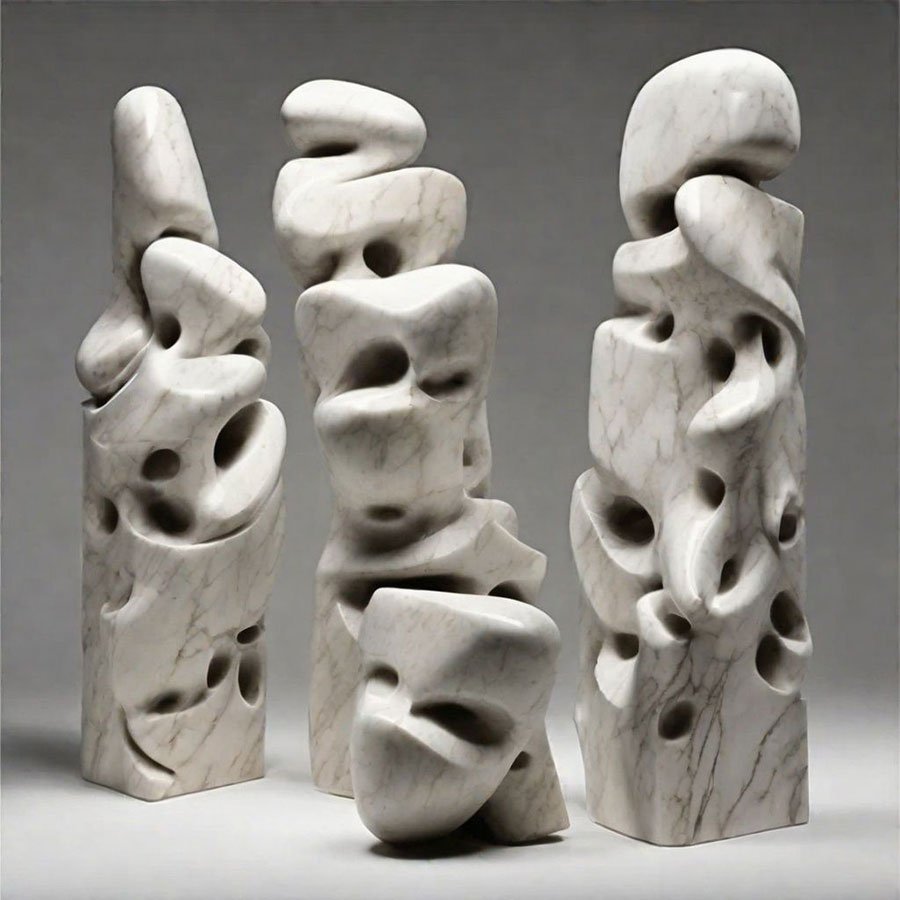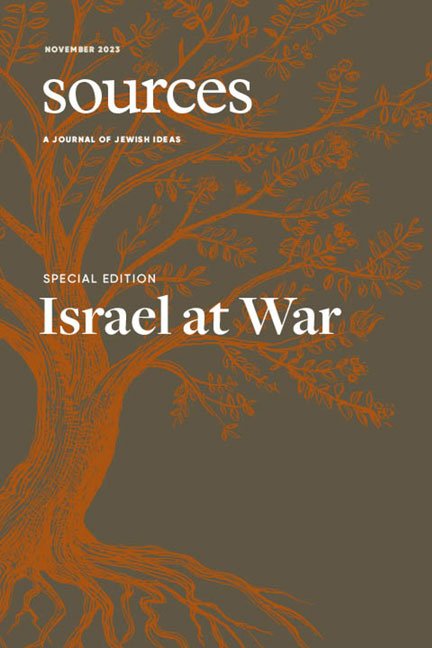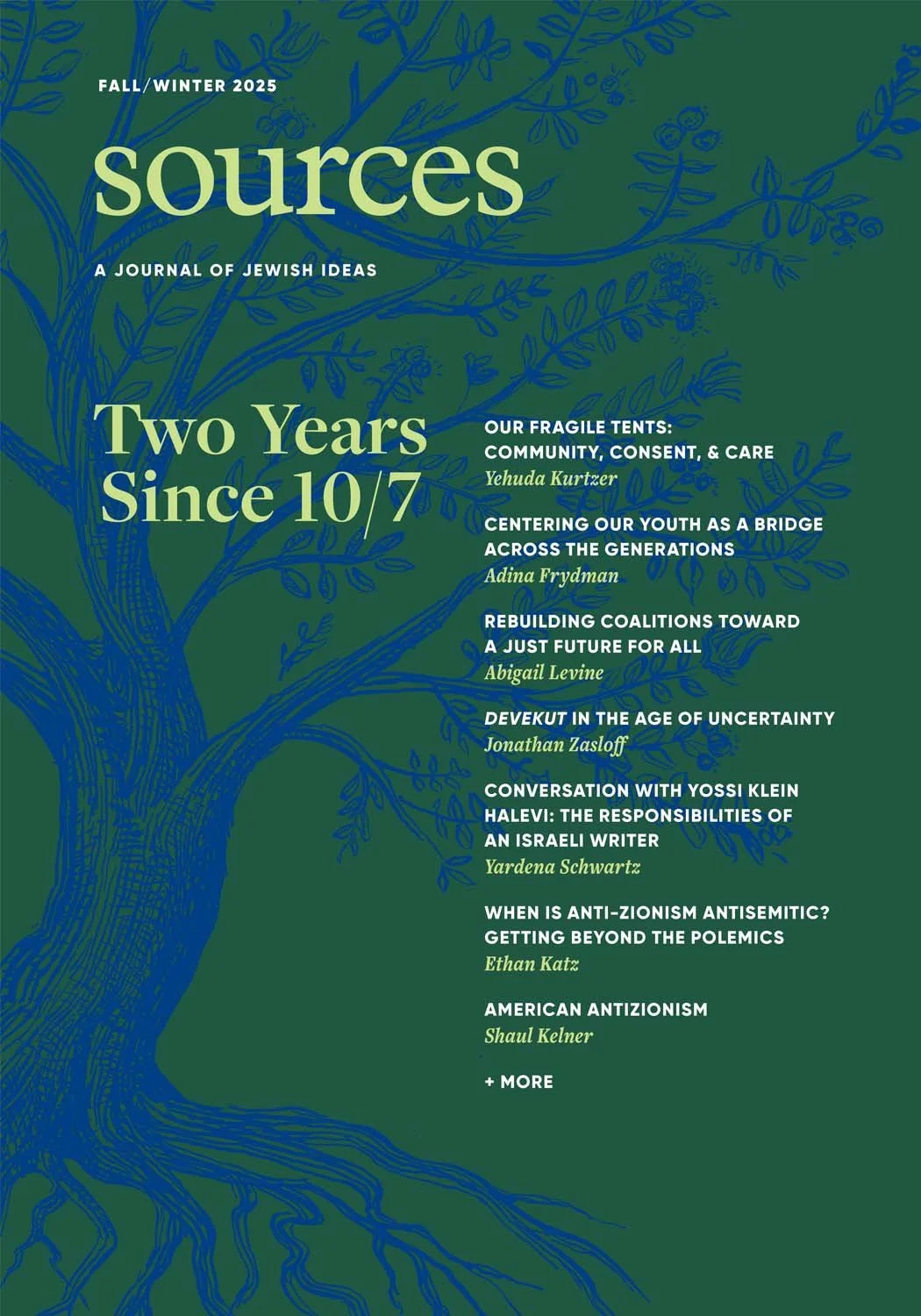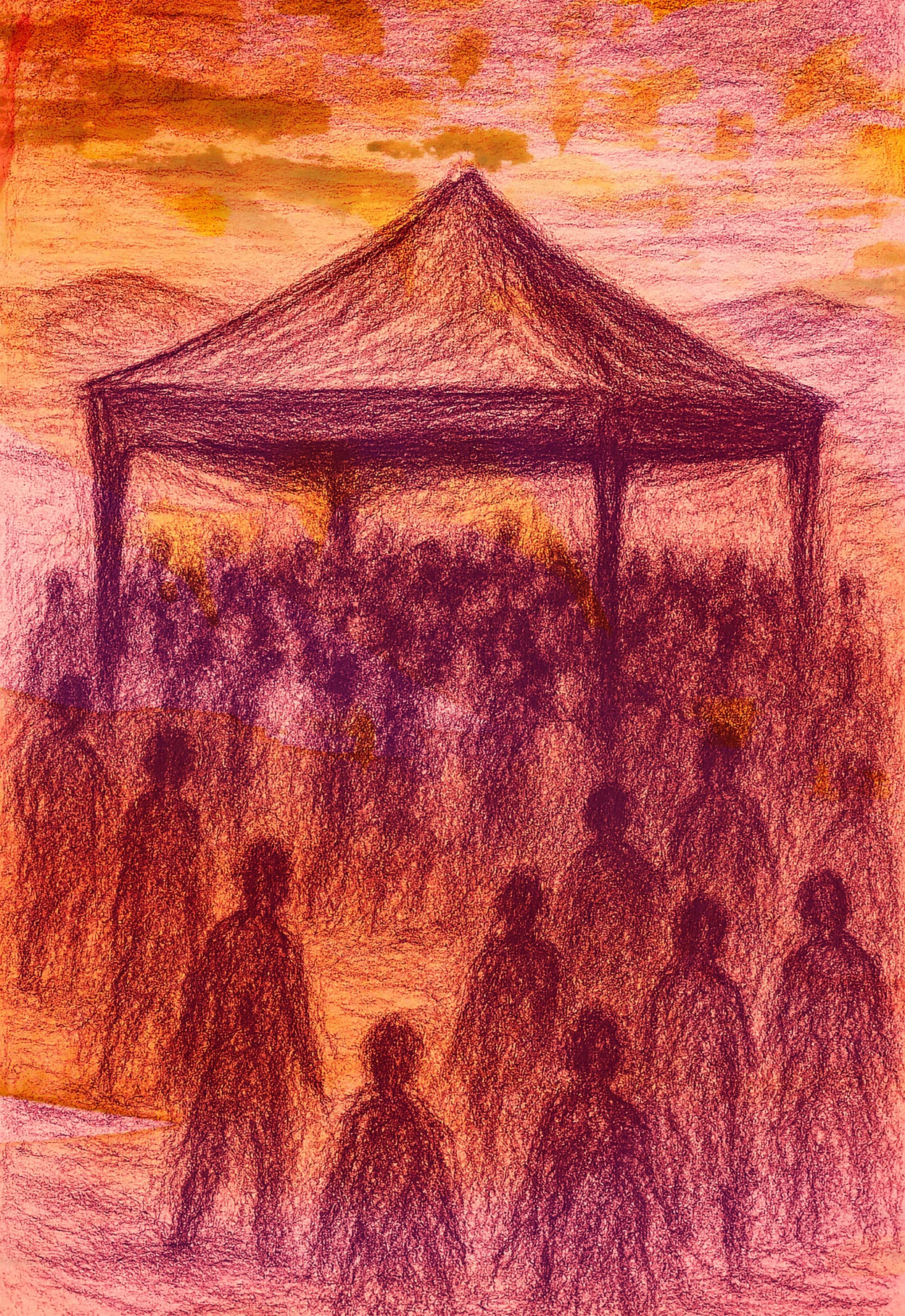A Shelter for Your Sorrows: Multifaith Chaplaincy in a Time of War
Katja Vehlow
Katja Vehlow is a rabbi and previously taught Religious and Jewish studies at the University of South Carolina, Columbia. She is currently training as a hospital chaplain at Maimonides Medical Center in Brooklyn.
For a PDF version of this article for reading and printing, click here.
The images and stories of that Shabbat in early October shook me. Of course, I know that such attacks occur; only a month earlier, Azerbaijan drove some 100,000 Armenians from Nagorno Karabakh in less than a week, with 200 dead and perhaps 400 injured, while most of the world watched and shrugged. And yet—large-scale killing of Jews, of my own people, was supposed to be a thing of the past. This was a jarring day, one that shattered the trust Israelis had set in their state and their security system, and one that, for many, evoked memories of the Shoah. In far-away New York City, I joined my Israeli friends in grief and shock.
Perhaps because I am training to be a chaplain, and my chaplaincy persona is still in formation, the time we live in right now feels pivotal. A seismic shift is occurring, and the outcome is unclear. I decided early on that I wanted to learn to harvest my sense of profound disorientation. I wanted to tap into my emotions to better align with seekers of care so that I might understand their experiences of suffering, uncertainty, and loss in a deeper sense. I also wanted to understand what this massacre, and the ensuing war between Israel and Hamas, means for my understanding of and my place in multifaith work.
Chaplains provide spiritual and emotional support to individuals or groups, often during crises such as illness, death, or other traumatic events, but few of us are trained therapists. A chaplain may assist someone to identify sources of hope and strength or may offer support when difficult ethical questions arise. In the United States, chaplains can be found in many different settings: hospitals, universities, nursing homes, the military, prisons, and even some workplaces.
Chaplaincy is quintessentially multifaith work; chaplains quite often work with people from many traditions both as seekers of care and as colleagues. A chaplain may provide tradition-specific care such as blessings or rituals, but minority chaplains in particular routinely serve people who come from other or no explicit faith traditions. While doing so, chaplains work from within their own tradition. This means that Jewish chaplains often turn to the spiritual tools of the Jewish tradition to make a difference in the lives of people who are not Jewish. My approach to chaplaincy may be primarily anchored in Jewish texts, ideas, and songs, but this perspective is not usually expressed in my day-to-day encounters with patients. And so, I asked myself after October 7, how can Jewish texts help us to incorporate an experience of genocide, of violence, and great uncertainty into our work as caregivers?
In Parashat Vayera, Genesis 18:1, we read that God appears to Abraham as he is sitting by the terebinth of Mamre. This unusual verse marks a pause between the story of the circumcision of Abraham and his household and the visit of the three angels who will foretell the birth of Isaac. Jewish tradition reads this as a sick visit, a connection not made by the Bible itself.[1] The verse is unusual because it does not continue with a speech act, as for example in Genesis 12:7 or 17:12 where “God appeared to Abram and said…” Instead, we read that vayera elav Adonai, “it appeared to him God.” And then, nothing. The Torah does not tell us what they are talking about and remains vague. Perhaps, as my teacher Rabbi Benzion Leser pointed out, God visits Abraham, and no words are exchanged as he sits with him in his pain. What matters is the silence. This visit, traditionally seen as an archetype of bikkur cholim, of visiting the sick, models a powerful presence when we visit someone in distress. Such an attentive listening silence can signal: I am here with you. I have no words for what you are going through. In fact, I may not understand what you are experiencing right now but I am here. Sometimes, just sitting in that person’s pain is a powerful way to support them. True presence, a hallmark of chaplaincy, is active and nurturing. Presence and simply holding space is invaluable when working with those in pain.
It is easy to dismiss silence. Isn’t it cheap to say nothing? What does it mean when this silence feels hostile and isolating? Or, perhaps worse, when people we consider friends dismiss our experience as marginal by refusing to speak? And indeed, many found the silence of some of their friends and colleagues right after the October 7 massacres, and now during the war, deafening. They feel abandoned. But there are different kinds of silence: there is the silence born of rejection, or of apathy, when another person cannot be bothered to speak, and the silence that is an expression of speechlessness because we may lack words or be afraid to hurt someone. A silence of distance or disengagement, of helplessness or caution is different from the silence we encounter when God visits Abraham in Vayera, from an intentional presence that joins someone who is in great distress.
In the story above, God listens, and in this listening offers a model to chaplains. Offering a listening heart to another person is one of the central things chaplains do. Listening is also at the heart of what is arguably the Jewish declaration of identity, the Shema, the assurance that there is but one God: “Hear O Israel: The Lord is our God, the Lord is One” (Deut. 6:4-9) followed by “It shall come to pass if you surely listen to My commandments which I am commanding you today, to love the Lord your God and to serve God with all your heart and all your soul.” (Deut. 11:13) For observant Jews, these words are the sounds of life: the Shema is recited twice daily during prayer and at bedtime, and also on Shabbat and at Neilah, the closing prayer of Yom Kippur. Its words are softly whispered into a newborn’s ears and recited as the deathbed vidui, the last penitential prayer before death. The opening word shema has so many meanings: to hear, to listen, to understand, to respond, to pay attention. The connotation is that the God of the Hebrew Bible often communicates in sounds rather than images, and again and again tells the Israelites to heed God’s words. Rabbi David Cohen (1887-1972), also known as the “Great Hearer” and as Rav Kook’s main student, notes that in the Babylonian Talmud, too, understanding was connected to hearing, not seeing. Ta shema, we read, “come and hear.” Or shema mina, “hear from this.” Listening matters.
Almost a century ago, Anton Boisen (1867-1965) founded what is now known as Clinical Pastoral Education (CPE), to date the gold standard for chaplaincy training in the US. He centered the intensive study of the human experience or, in his words, “the living human document” as the core task of CPE. Boisen called on chaplains to start with the suffering person and only then to turn to books. Texts in the widest sense could be helpful but they were not more important than the person in front of a chaplain. Guided by his own experiences with mental illness, combined with a focus on liberal Protestant theology and a trust in science, Boisen thought that humans, while flawed creatures, could resolve their inner conflicts through the ultimate unification with the divine.[2] While our understanding of human nature has changed considerably over the decades, the “living human document” remains the essence of CPE programs, its focus now broadened to the “living human web,” an approach that takes into consideration the wider context in which humans exist, with a strong call for social justice.[3] Both approaches share a common aim: to extend radical empathy for the individual or the wider context in order to respond to people in need.
Chaplains encounter people at a time of great vulnerability. In order to help support somebody else who is in pain, we look towards our own vulnerability. In the last month, I found myself reaching deep into myself to hear not only the stories swirling around me, but to take note of what they evoked in me. At first, there were the stories from Israel: every day, every hour seemingly brought new voices telling new stories of brutality, resilience, and grief. Then came the war and the bombardment and with it the pictures and stories from Gaza and, a little closer, vigils, demonstrations supporting Palestine or Israel, or Hamas or the hostages in Gaza, random acts of hatred and violence, both real and perceived. Suddenly, many Jews and Palestinians lived in fear. Of course, colleagues and seekers of care were also impacted by this atmosphere. “Oh,” said the brother of a patient to me in the Emergency Room, a few days after October 7, sadly and with sympathy, “are you Jewish? How can you even be here and minister to us this week?” I thought about his words as I sat on the subway on my commute home. While I had come to see how he was doing while his brother was undergoing an evaluation, he had taken a moment to consider who this chaplain was who was standing in front of him. How indeed could I serve my patients best, including those who may have roots in the region, on whatever side of the fence they may find themselves? I quickly learned that it can be difficult to mourn in a time of war, perhaps especially when this war is taking place at a great distance and is heavily contested. And yet, the events seem so close and raw, and new losses and horrors loom every day.
Love Jewish Ideas?
Subscribe to the print edition of Sources today.
CPE calls on chaplains to connect with others across difference, but if I do not listen to myself, can I truly hear others? Daniel Silberbusch, my CPE educator, reminded me of the wise words of Etty Hillesum (1914-1943), the Dutch Jewish author who wrote about her spiritual awakening amid the persecutions Amsterdam Jews suffered under German occupation, and who herself was murdered in Auschwitz. Imagining a conversation with her friend, the poet Ilse Blumenthal-Weiss, she astutely observes in her journal:
Give your sorrow all the space and shelter in yourself that is its due, for if everyone bears his grief honestly and courageously, the sorrow that now fills the world will abate. But if you do not clear a decent shelter for your sorrow, and instead reserve most of the space inside you for hatred and thoughts of revenge - from which new sorrows will be born for others - then sorrow will never cease in this world and will multiply.[4]
Hillesum tasks her reader, and perhaps herself, with setting out on a path of radical emotional honesty, a process that she feels was necessary for healing. Her powerful words call on me to let grief bubble up, and allow any connected feelings—even the ones I would rather ignore such as fury, shame, or numbness—without judging myself. Only when we can see these emotions in ourselves, when we allow ourselves to build our own shelters of sadness, can we stem the wave of mourning. This is an inner process, and chaplains learn to take the time to do this work so they do not bring these emotions to their patients. Hillesum also issues a stern warning to not hate those who caused us grief because many of them, too, “sorrow at this time.” They, too, are human, with their own stories and their own sadness.
Chaplaincy is not so much an interfaith or interreligious project as a multifaith undertaking. Chaplains rarely talk about theories of interreligious encounters. But while many interfaith projects have paused or collapsed, chaplaincy continues because, I suspect, chaplains are united in their service to the very real suffering of people, regardless of who they are. This is true not only in American hospitals but also in Israel, where healthcare is one of the few fields open to Palestinians outside the confines of Palestinian society, and Palestinian Israeli citizens make up a considerable share of healthcare professionals. In 2021, 43% of new licenses went to Arab and Druze doctors, for example.[5] Their presence gives Palestinian Israeli patients a sense of cultural recognition along with a sense of safety. They are rarely thanked; when Israeli Palestinian healthcare workers leave the hospital, they are again read as Israeli Palestinians only. They may return to neighborhoods that are riddled by violence; more than 200 Palestinian Israelis have been murdered in their own communities this year alone.[6] And now, during the war, the place of Palestinian Israelis in Israeli society is becoming ever more precarious, their rights curtailed and threatened. Despite this, Palestinian Israeli healthcare workers continue to care for every human being, no matter their origin. Many are filling in for Jewish physicians called up to serve in the reserves. Israeli hospitals remain places were Jewish and Palestinian Israelis work to heal Jewish and Arab patients, sites of extraordinary cooperation and achievement for Arab professionals. Fahima Abbas, a researcher at Adva Center, an Israeli progressive think tank monitoring social and economic development, recently notes that this cooperation “is an important element of a democratic state.”[7] This acceptance of Israeli Palestinians in the medical field has limits; discussions of politics are usually off limits, for example. I would argue that it is the shared focus on the task at hand, on the suffering individual and the promise of healing, that has made Israeli hospitals into extraordinary places.
Chaplaincy embraces multifaith learning so chaplains can approach the people they work with in culturally and religiously appropriate ways. This also extends to an awareness of the presence of other traditions in our own traditions. By this I do not mean to read, say, Jesus or the Prophet Muhammad into the Hebrew Bible, although Christian and Islamic traditions have long done so. Rather, I mean an awareness that our holy texts and the ways in which they are read today are contested and enmeshed. For example, when I turn to the akedah, the story of the binding of Isaac (also known as the Test of Abraham), a seminal story of Jewish identity, I hold in the back of my mind that before the “your son, your only son,” as God calls Isaac, there was a first son, also beloved, who was expelled from the family. It is a hard story to read, and Jewish tradition asks whether Abraham and Sarah sinned when they sent Hagar and Ishmael away. The two versions of the story appear in Genesis 16 and 21. In Genesis 16, Sarah initiates Hagar’s marriage to Abraham, and, apparently unprepared for the psychological impact Hagar’s pregnancy and Ishmael’s birth would have on her, abuses Hagar until she takes off, taking her child with her. For that reason, the thirteenth-century Spanish scholar Nachmanides comments that yes, “Sarah our mother sinned in this oppression, as did Abraham when he allowed her to do so.”[8] In Genesis 21, on the other hand, Hagar and Ishmael are sent away because of Ishmael’s behavior. The term describing his acts is subject to a wide range of interpretations that many commentators relate to a fight over inheritance of property as well as spiritual and political leadership over the Jewish people.
The great Israeli exegete and educator Nechama Leibowitz (1905-1997) notes that in Genesis 16, when Sarah was reacting to an uncomfortable domestic situation, the Torah judges her treatment of Hagar to be unjust. However, in chapter 21, Ishmael was seen as a threat to Isaac’s right of inheritance. In her eyes then, the Torah endorses strong action, including expulsion, to safeguard Jewish religious and national aspirations. Ishmael is sent away, and the sibling relationship between him and Isaac is severed, even if there seems to have been some sort of a reconciliation later on when they bury their father together. And yet, this rejected son receives his own blessing and becomes the patriarch of another religion. The three Abrahamic traditions, and especially Islam and Judaism are intertwined, with competing claims to truth, prophecy, and, now tinged with nationalism, land.
In chaplaincy, there are no bit players, as Silberbusch put it to me. Hillesum knows this when she explains that the seemingly interior process of allowing sorrow to surface is anything but private. As she writes in the quote above: “But if you do not clear a decent shelter for your sorrow… then sorrow will never cease in this world and will multiply.” Emotions, especially the difficult ones, want to be acknowledged internally so that on a communal level, too, healing can begin. The last month has been extraordinarily distressing for many people with the rising death toll in the war and the surge of antisemitism and Islamophobia, physical attacks, rhetoric endorsing the dehumanization of the other, and “leaflet wars” in urban neighborhoods. On college campuses, sites of great tensions, Jewish and Muslim chaplains, some of whom have become targets of aggression themselves, continue to care for angry and shaken students, offering space, and hope, and a listening presence.[9] Many people feel scared, angry, powerless, sad, isolated and unsafe, and it is not clear what all this means for the future of Israel/Palestine, the Jewish community and multifaith relations.
When I was a child, my German mother would tell me about the “Quäkerspeisung,” mythical parcels that would arrive from distant America as she grew up. Her eyes would shine as she recalled their captivating contents such as cheddar, chocolate, and chewing gum, rare delicacies in post-war Germany. Until I was 18 years old, I was convinced that the Religious Society of Friends who had sent them were a denomination numbering in the millions. Imagine my surprise when I learned differently. These parcels did not keep my mother alive, but they signaled to her that across the ocean, someone was seeing her as a little girl, a fellow human being. I do not know what the world will look like once the Gaza War ends, or what this war will mean for Palestinians and Israelis, for Muslims and Jews, and all the others who are touched by this conflict, not least the hostages in Gaza. But I know that, like the Quakers sending these parcels after World War II, I hope I will continue to see all parties involved as human. At moments of acute suffering, we have a choice to make: will my own suffering lead me into isolation, or will it lead me into connection with others?
Endnotes
[1] Babylonian Talmud Bava Metzia 86b.
[2] See, for example, Anton T. Boisen, Religion in Crisis and Custom: A Sociological and Psychological Study (New York: Harper and Brothers, 1945, 1955), 237.
[3] Bonnie J. Miller-McLemore, “The Living Human Web: A Twenty-five Year Retrospective,” in Pastoral Psychology 67 (2018): 306-321.
[4] Etty Hillesum, An Interrupted Life: The Diaries 1941-1943 and Letters from Westerbork (New York: Henry Holt, 1996), 97.
[5] Fahima Abbas, “In war as in peace, Palestinian Israeli physicians' contribution to Israel is essential – opinion,” Jerusalem Post, November 2, 2023.
[6] Adi Hashmonai, “25 Year-old Shot Dead in Northern Israeli Arab City, Police Arrest Suspect” Haaretz November 18, 2023.
[7] Fahima Abbas, “In war as in peace, Palestinian Israeli physicians' contribution to Israel is essential – opinion,” Jerusalem Post, November 2, 2023.
[8] Commentary to Genesis 16:6.
[9] Mariam Fam, “Jewish and Muslim Chaplains Navigate US Campus Tensions and Help Students Roiled by Israel-Hamas War,” AP News, October 28, 2023.
For a PDF version of this article for reading and printing, click here.




